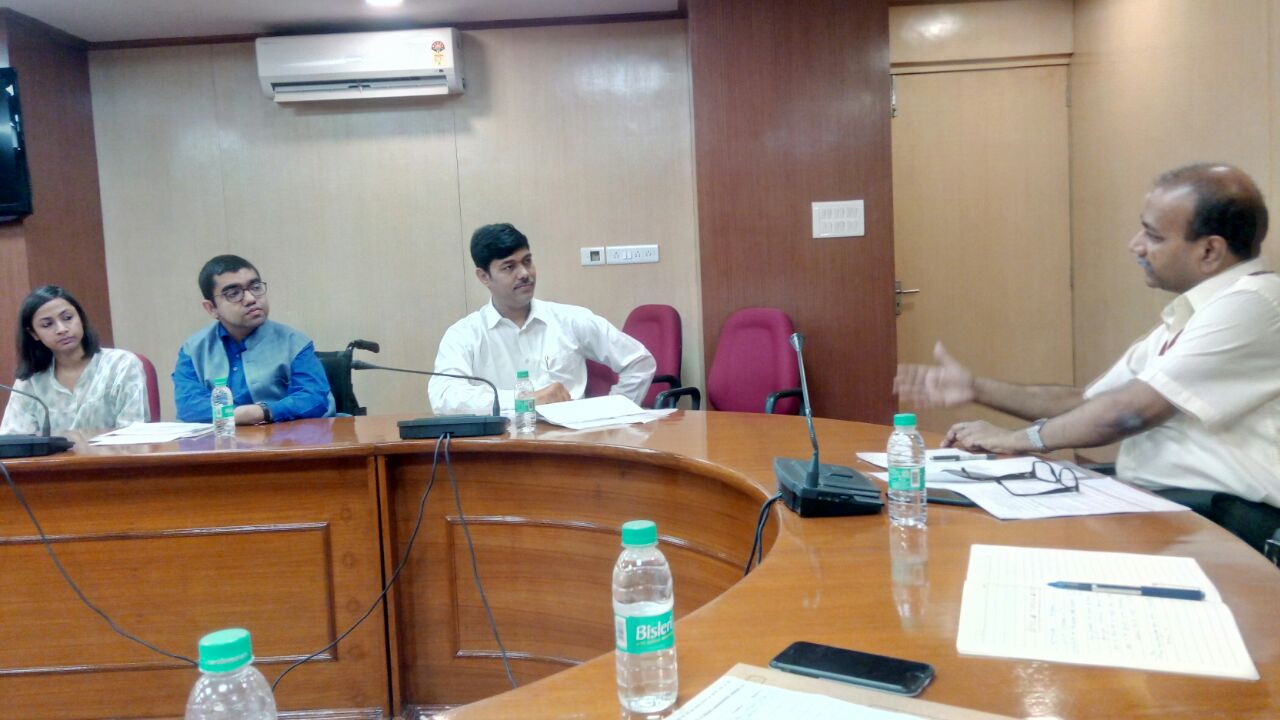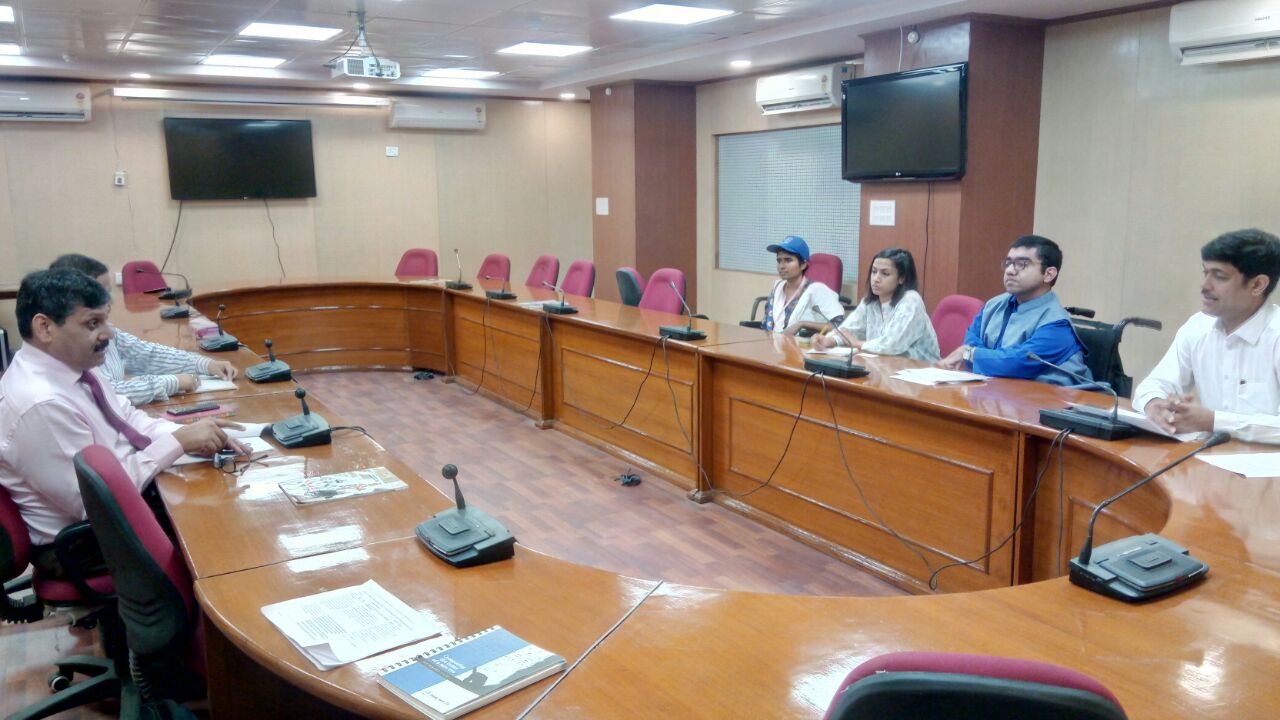New Delhi | 12 May 2018
On the invitation of the Base Hospital Delhi Cantt, Ms. Sminu Jindal, Chairperson-Svayam, visited Base Hospital to deliver a ‘Motivational Talk’ to the injured soldiers and their family members, doctors and hospital staff, on 11th May 2018. She was received by Major General Manu Arora, The Commandant, Base Hospital Delhi Cantt.
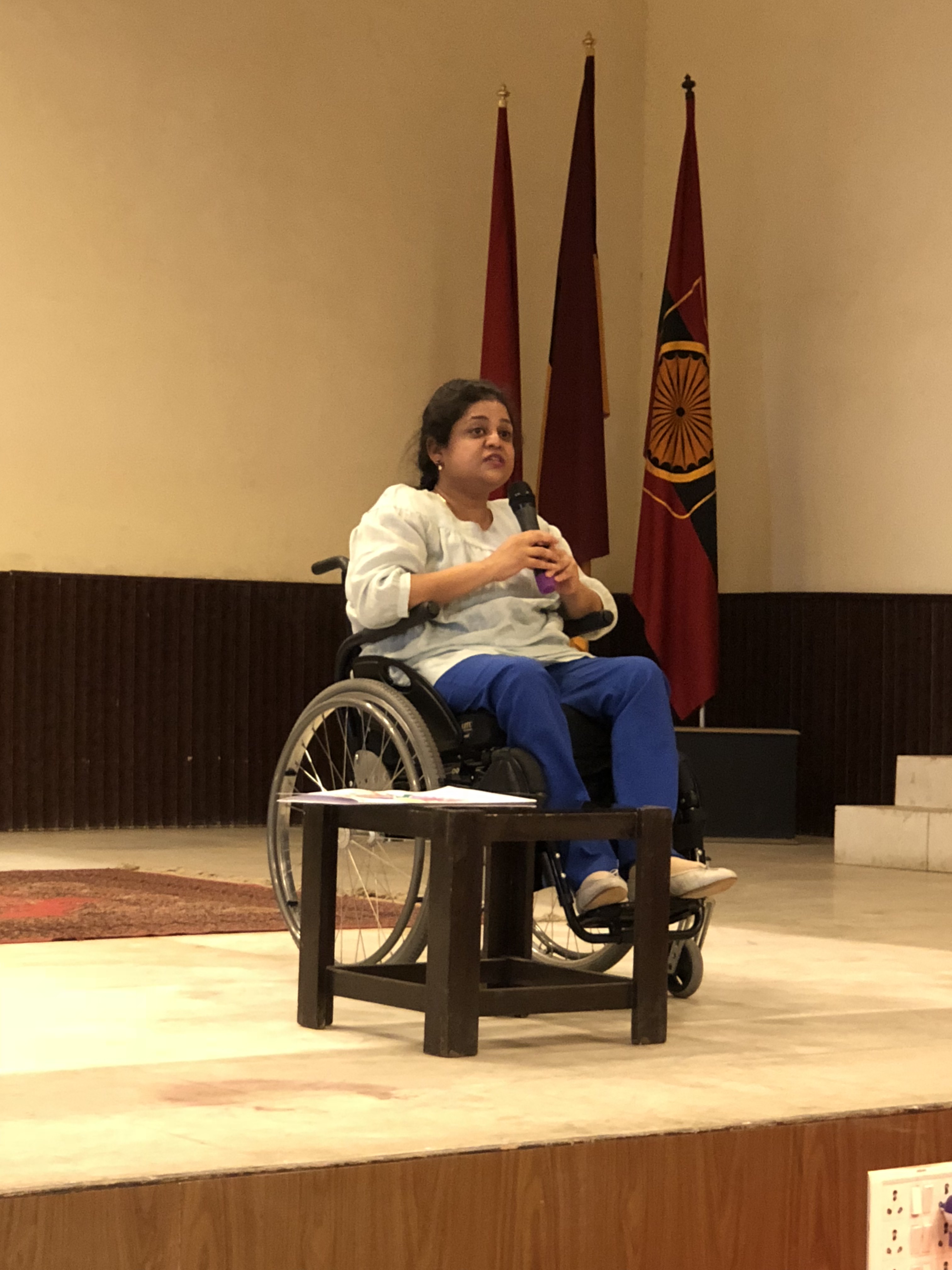
During her motivational talk, Ms. Jindal talked about the initial struggles of her life, and shared that looking at life positively despite disabilities or age is the key to success and happiness.
“When you acquire a disability, you have two options; what you can do, and what you cannot do. Instead of regretting what you cannot do, it is vital that you focus on your existing abilities and see what you can do with those abilities.” said Ms. Jindal.
“Sitting at home like a sad man cannot be a choice. Don’t give anyone an excuse to call you or make you feel ‘बेचारा’ (hapless), she continued. Sharing her own life story, she added, “Due to an accident at the age of 11, I became a wheelchair user for the rest of my life. Apprehensive that others might make fun of me, I did not want to go to school, and instead wanted to study at home. However, my parents ensured that I got a normal school education, so that I could grow and do things like any other child. That way, my parents did not give me any excuse to feel ‘’बेचारा’ !
Ms. Jindal told the rehabilitating soldiers, “I can only give you an outlook. I always admired the soldiers who fight at the borders for others. When you did not bow down in the battlefield on the border, please do not bow down in the battlefield of life. Life is also a war, so fight it and figure out your own path.”
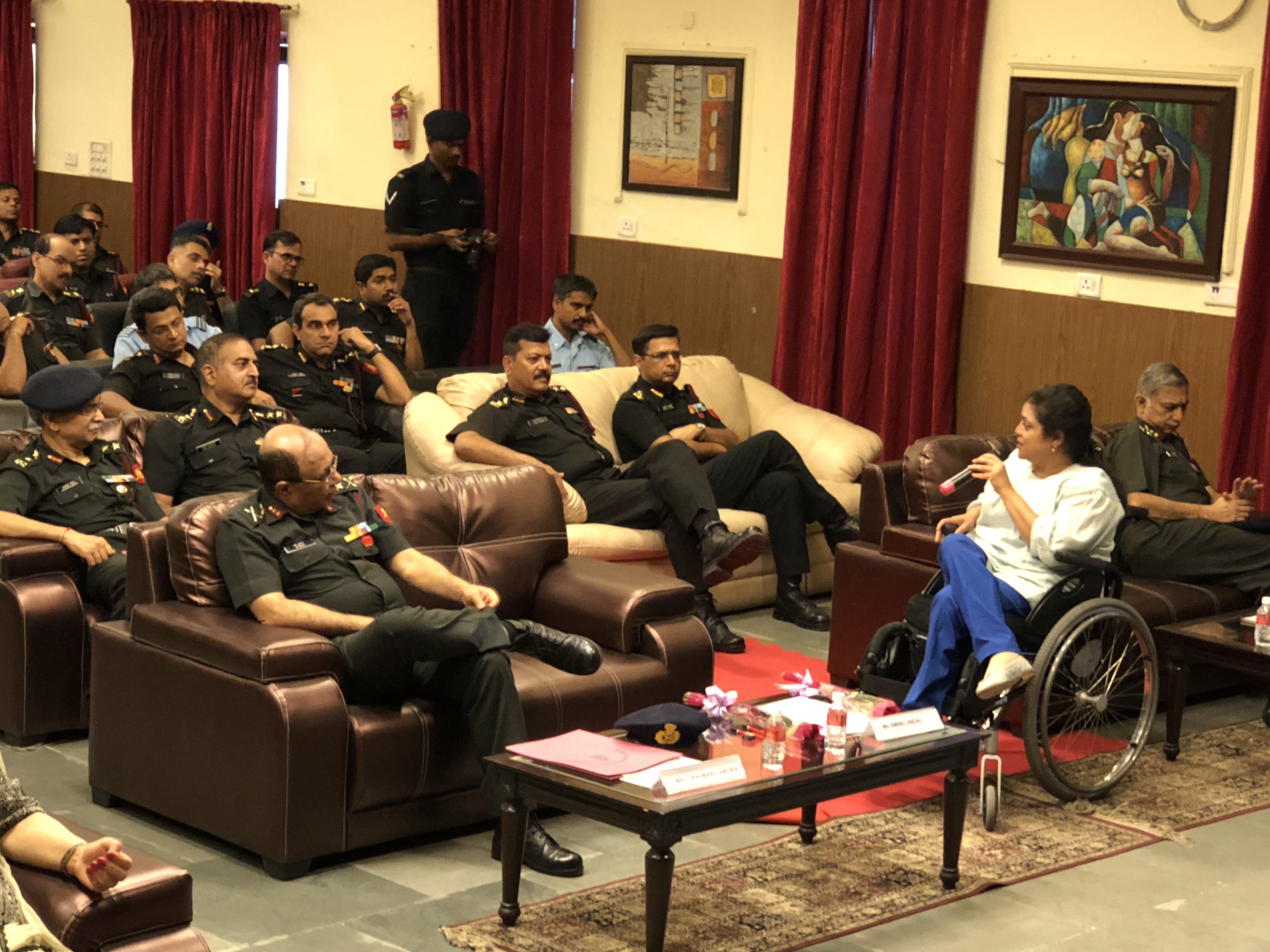
Talking about accessibility and the need of greater awareness, the Svayam founder said: “The prevailing misconception that ramps, lifts and accessible technologies are only for the disabled, need to be demolished. We all need accessibility for ease and safety. Accessibility is a ray of hope which ensures that we can go out and earn our living with dignity. Accessible built environment is crucial to tap the enormous talents in persons with reduced mobility.”
“No matter how long or dark the tunnel is, a single ray of light gives you hope – and accessibility is that ray,” she added.
Ms. Jindal also emphasized that Svayam is pressing upon the government to build one accessible toilet in every village with local material and technology. “This will set an example for others to follow.”
“If our village schools have accessible toilets, our retired or rehabilitated soldiers living in the village can go out and teach. This is another dimension of inclusive education,” she added.
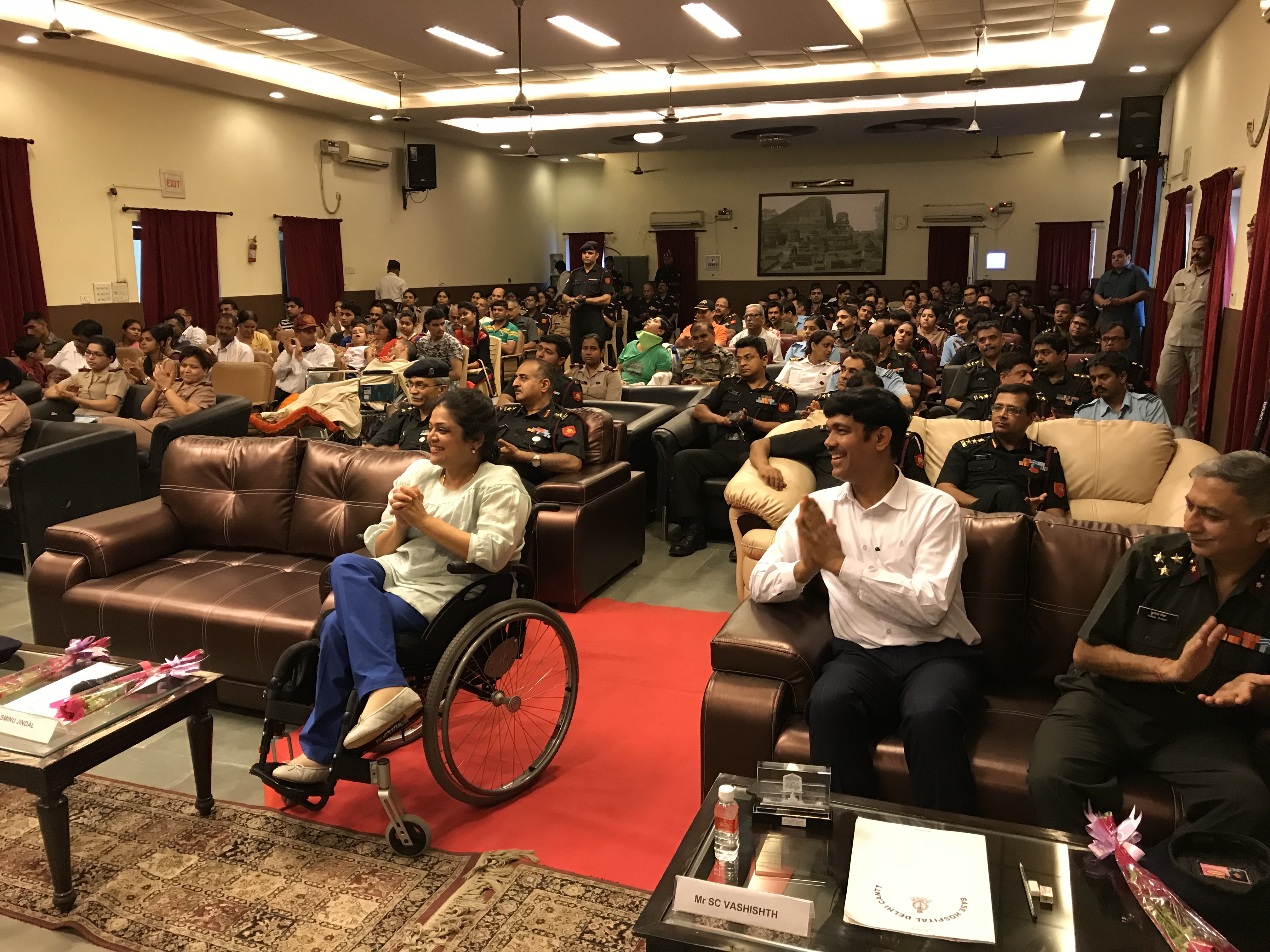
Ms. Jindal said: “We need to raise awareness. If voices are many, it will create an impact. Can we not add ‘सुगम्यता’ (accessibility) along with our usual demands – बिजली, पानी और सड़क (electricity, potable water & roads) ? The government has to realize that it needs to look at all sections of society. Then only, ‘सबका साथ, सबका विकास’ (inclusive development) will become a reality!”
She said: “The choice of our daily activities should depend on us, and not on our built environment. That’s why Svayam is working with ministries and government departments to ensure our public infrastructure is accessible. Also, merely making government buildings accessible is not enough, private buildings (open to public) also need to be accessible.”
While answering a query raised by a soldier, Ms. Jindal said: “A सैनिक (soldier) never bows down before an enemy. But today, negativity might be your main enemy; would you bow down? No! you need to have a positive outlook towards life and lot of enthusiasm to beat this enemy.”
Encouraging the Indian armed forces to spread the awareness about importance of accessibility in built and virtual environment towards an more inclusive and caring society, she also praised the work of Base Hospital Rehab Centre, and said that with good rehabilitation and counselling, injured soldiers and their family members can quickly learn to adapt and accept the challenges before them in the life with a positive mindset.
Major General Manu Arora, the Commandant, felicitated the Svayam Founder, and praised her initiatives of spreading such a positive, wonderful outlook towards life through her initiative, Svayam. The Major General exhorted the soldiers and their families that there are shortcomings in everyone’s life, but we need to see what we can do with what we have, and what we can add. He also called upon the participants to link accessibility with their life’s missions.
Taking a cue from an article published in India Today in the year 1999 on the life and work of Ms. Jindal, Maj. Gen. Arora called Svayam Founder a person with true ‘nerves of steel’ and marveled at her achievements in the Indian Industry.
Mr. Subhash Chandra Vashishth, Director, Svayam, made a brief presentation to apprise the audience of his organization’s major projects and achievements in the area of advocacy and policy reforms to achieve the dream of an inclusive and enabling built environment to respect dignity of human lives.

